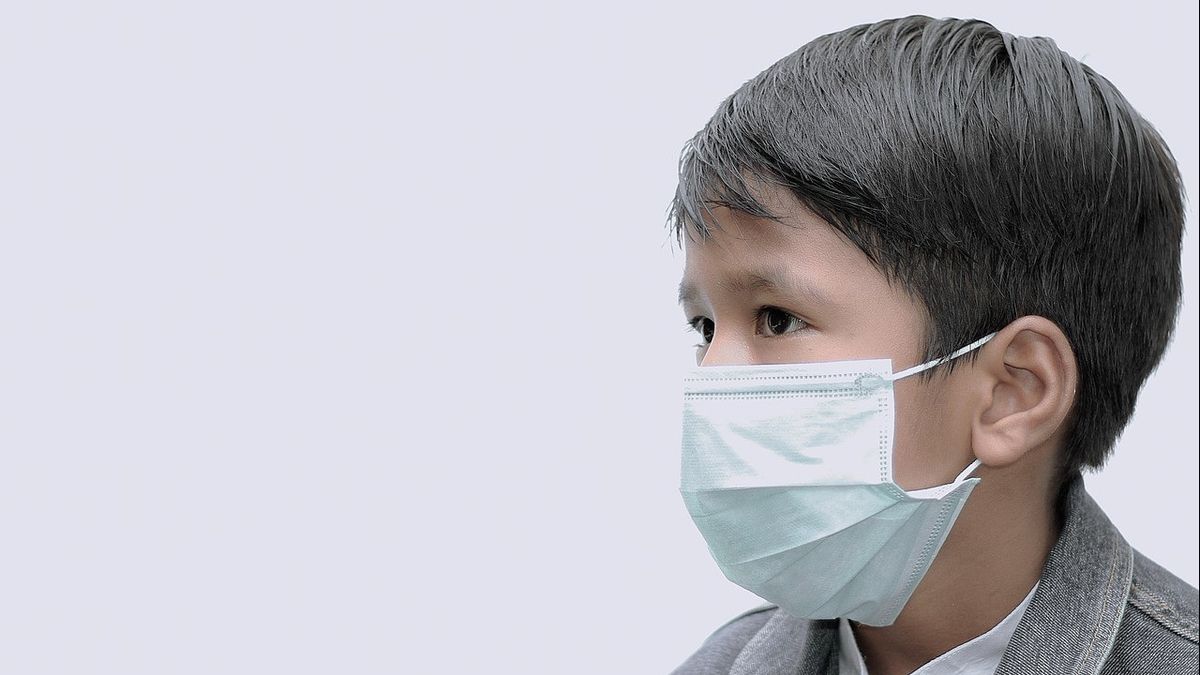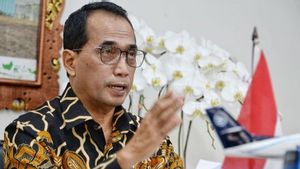
YOGYAKARTA Singapore flu disease is often equated with sariawan because it both causes lesion in the mouth. Another disease that is often equated with Singapore flu is smallpox. The following is the difference between Singapore's flu and smallpox.
Please note, cases of the Singapore flu or Hand, Foot, and Mouth Disease (HFMD) are angry in Indonesia. This disease is experienced by many children under the age of 5.
Singapore flu can cause symptoms such as fever, rashes, and lesions. Lesions that appear in the mouth due to the Singapore flu are very similar to those commonly occurring.
The difference between Singapore's flu and smallpox was revealed by a specialist child specialist consultant, Prof. Dr. dr. Edi Hartoyo Sp.A(K).
He said the difference between Singapore's flu and sariawan could be recognized from the location where the lesi emerged.
In Singapore flu, lesi and liter can appear around the mouth of the outside and the lips, foot soles, and hands. While the lesions caused by the searawan only appear in the mouth.
"Sariawan is usually only in the mouth, the shape is almost the same, so sometimes parents go to their doctor and their child doesn't want to eat when viewed because there are lesions in his mouth," said Edi, quoted by VOI from Antara, Saturday, April 6, 2024.
He added that the oral lesion in the HFMD case looks the same as shariawan. This condition can make children lazy to eat and have difficulty swallowing.
Next, Edi explained the difference between Singapore flu and chickenpox. These two diseases can also be distinguished from the location where lesi emerged.
Scar water, lesinya di badan baru keluar, lesi lesik pinggang kulitnya merah. Kalau flu Singapura tidak, dari lokasinya, flu Singapura paling sering di temasal kapal kaki, poku tangan dan mulu, kakaapoxang jarang di telapk tangan, terang dokter Edi.
Another difference, in the Singapore flu, lesions or wounds on the skin will automatically disappear without causing any scars. Meanwhile, in the case of chickenpox, lesions can be imprinted on the skin.
The interest in the Singapore flu does not make an impression because the depth is not like smallpox which can penetrate the second layer of skin tissue.
Furthermore, Singapore flu does not cause immunity and can be infected again, the body's endurance decreases. This is different from smallpox, which, if it has been exposed, the body can form immunity so that it is rare for smallpox to be re-affected and then hair.
Virus ini (flu Singapura) tidak menyebabkan kekebalan, berbeda dengan smallpox atau sampel bisa terbaluh tapi virus ini enggak, kalau musim ini kena kesokannya bisa terkena lagi kalau dia da kontak, jadi masih bisa terkena, ucap Edi.
관련 항목:
On the other hand, Edi said that Singapore flu cases in children under the age of 6 were quite high. The lack of parental sensitivity to this disease is the cause of the high number of Singapore flu cases in Indonesia.
Often when a child has a fever, has difficulty eating, and red spots appear, parents still send their children to school and are not isolated at home, so the spread in children is very high and fast.
Although it is classified as a mild disease that can recover within seven days, Edi hopes that parents can comply with health protocols to prevent the spread of Singapore flu. Children affected by this disease can be self-isolated at home if symptoms appear such as fever and red bitnik appears on the soles of their feet, hands, and mouth.
"If a child has the flu Singapore is isolated by preventing contact with other children because it is contagious, the infectious period is 3-5 days, 7 days he is not infectious even though his lesin is in the healing stage but is not contagious," said Edi.
This is information about the difference between Singapore's flu and smallpox. Hopefully this article can add insight to the loyal readers of VOI.ID.
The English, Chinese, Japanese, Arabic, and French versions are automatically generated by the AI. So there may still be inaccuracies in translating, please always see Indonesian as our main language. (system supported by DigitalSiber.id)















